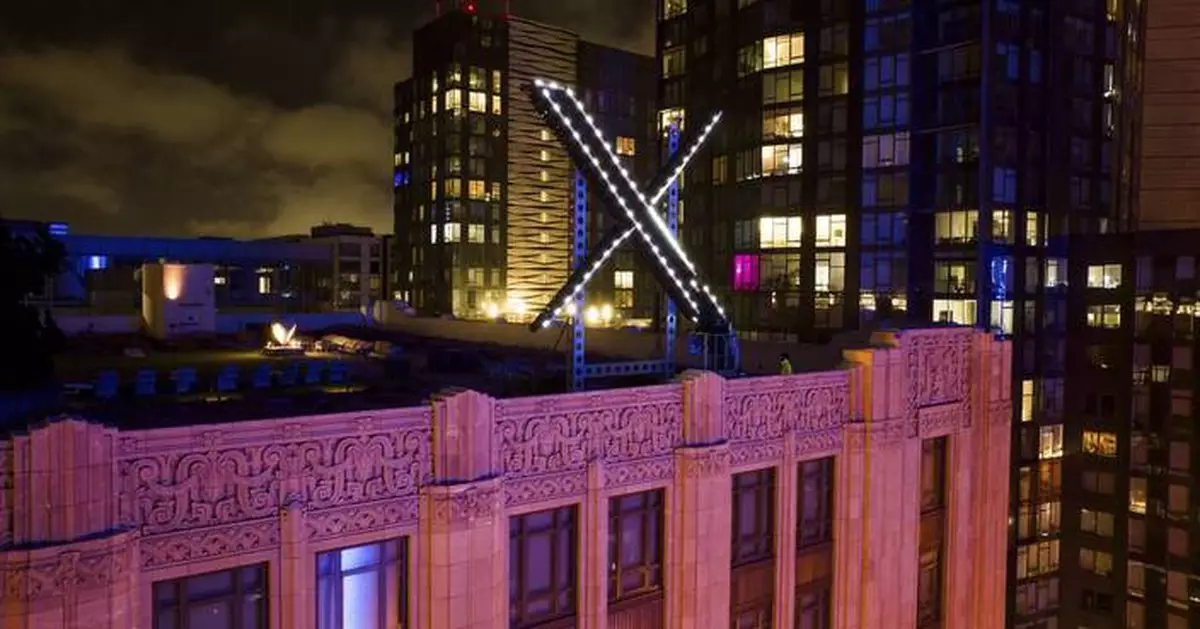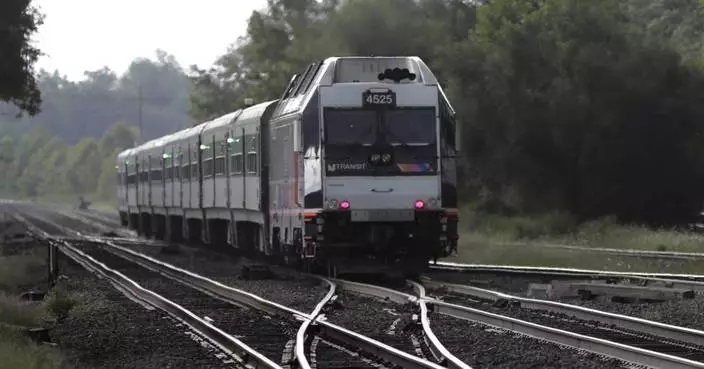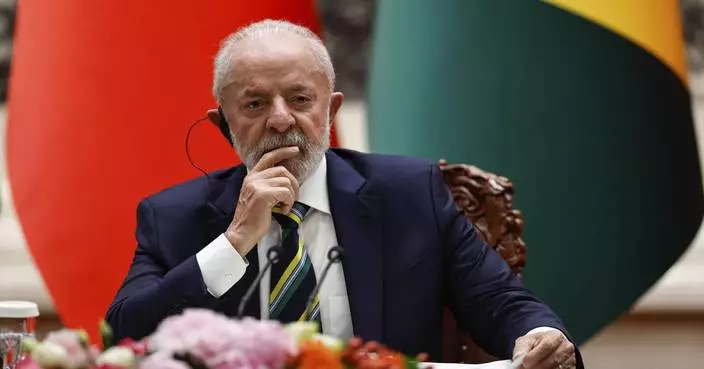Elon Musk has sold social media site X to his own xAI artificial intelligence company in a $33 billion all-stock deal, the billionaire announced on Friday.
Both companies are privately held, which means they are not required to disclose their finances to the public.
Musk said in a post on X that the move will “unlock immense potential by blending xAI’s advanced AI capability and expertise with X’s massive reach.” He said the deal values xAI at $80 billion and X at $33 billion. Musk, who serves as CEO of Tesla and SpaceX as well as an advisor to President Donald Trump, bought the site then called Twitter for $44 billion in 2022, gutted its staff and changed its policies on hate speech, misinformation and user verification and renamed it X.
He launched xAI a year later.
“xAI and X’s futures are intertwined. Today, we officially take the step to combine the data, models, compute, distribution and talent. This combination will unlock immense potential by blending xAI’s advanced AI capability and expertise with X’s massive reach,” Musk wrote on X. “The combined company will deliver smarter, more meaningful experiences to billions of people while staying true to our core mission of seeking truth and advancing knowledge.”
It's not clear if the move will change anything for X users — xAI already uses data from X user posts to train its artificial intelligence models and paying X users have access to its AI chatbot, Grok, while nonpaying users can ask the chatbot 10 questions every 2 hours.
This story was first published on Mar. 28, 2025. It was updated on Mar. 29, 2025 to correct that Grok has already been available to X’s nonpaying users on a limited basis. An earlier version stated Grok had only been available to X users who paid for a subscription.
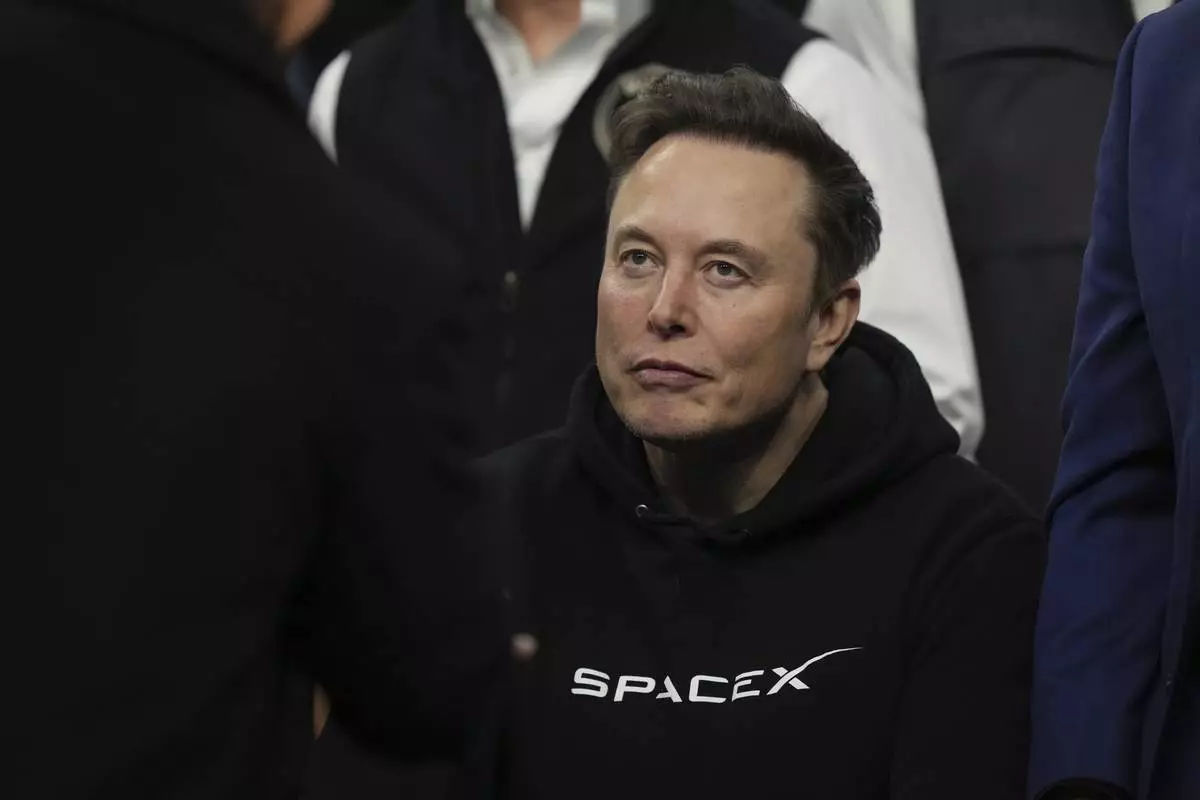
FILE - Elon Musk attends the finals for the NCAA wrestling championship, Saturday, March 22, 2025, in Philadelphia. (AP Photo/Matt Rourke, File)
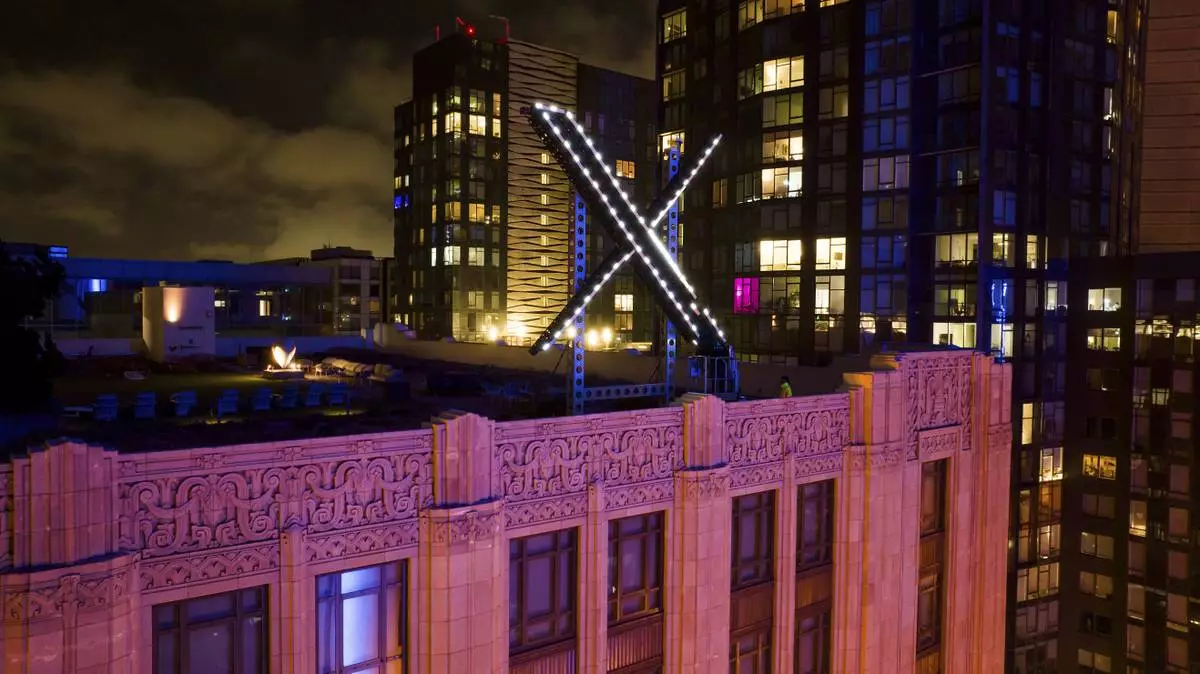
FILE - Workers install lighting on an "X" sign atop the company headquarters, formerly known as Twitter, in downtown San Francisco, July 28, 2023. (AP Photo/Noah Berger, File)
SACRAMENTO, Calif. (AP) — California is facing a $12 billion deficit that Gov. Gavin Newsom wants to help close by freezing enrollment in a state-funded health care program for immigrants living in California without legal status.
Newsom announced the deficit and his plans to cover it Wednesday as he outlined his nearly $322 billion state spending plan for the upcoming fiscal year.
Beyond higher-than-expected Medicaid spending, Newsom said the deficit is due to broad economic uncertainty, including ever-changing federal tariff policies and a volatile stock market. California relies heavily on revenue from a tax on capital gains.
Newsom, a Democrat, kicked off his budget presentation by highlighting California's contributions to the U.S. and world economy and blaming President Donald Trump's economic policies, which he said could reduce state revenues by $16 billion in the coming years.
“California is under assault,” he said. “We have a president that's been reckless in terms of assaulting those growth engines.”
He now opens budget negotiations with lawmakers and it’s unclear how Democrats who control the Legislature will react to his plan to freeze new Medi-Cal enrollment for some immigrants. A final budget proposal must be signed by June. California’s budget is by far the largest among states.
His decision highlights Newsom's struggle to protect his liberal policy priorities against budget challenges in his final years on the job and as he weighs his next political move, which could include a presidential run.
Immigration has become a politically potent issue nationally. Nearly half of Americans approve of President Donald Trump’s tougher immigration approach, according to an AP-NORC poll conducted in April. Meanwhile, Republicans in Congress have threatened to reduce Medicaid money for states that enroll immigrants living in the country illegally.
The freeze does not mean California is backing away from its support for immigrants, Newsom said.
“No state has done more than the state of California, no state will continue to do more than the state of California by a long shot. And that’s a point of pride,” he said.
California was among one of the first states to extend free health care benefits to all poor adults regardless of their immigration status last year, an ambitious plan touted by Newsom to help the nation’s most populous state inch closer to a goal of universal health care. But the cost ran $2.7 billion more than the administration had anticipated.
Newsom in March suggested he was not considering rolling back health benefits for immigrants as the state was grappling with a $6.2 billion Medicaid shortfall. He also repeatedly defended the expansion, saying it saves the state money in the long run. The program is state-funded and does not use federal dollars.
Under Newsom's plan, low-income adults without legal status will no longer be eligible to apply for Medi-Cal, the state's Medicaid program, starting in 2026. Those who are already enrolled won't be kicked off their plans, and the changes won't impact children. Newsom didn't say how long the freeze would last.
Starting in 2027, adults with “unsatisfactory immigration status” on Medi-Cal will also have to pay a $100 monthly premium. The governor's office said that is in line with the average cost paid by those who are on subsidized heath plans through California's own marketplace. There's no premium for most people currently on Medi-Cal.
“We believe that people should have some skin in the game as it relates to contributions," Newsom said.
Newsom's office estimated the changes will save the state $5.4 billion by 2028-2029.
The Medi-Cal expansion, combined with other factors such as rising pharmacy costs and larger enrollment by older people, has forced California to borrow and authorize new funding to plug the multibillion hole earlier this year. California provides free health care to more than a third of its 39 million people.
Newsom's proposals go against the commitment the state has made to the immigrant community, said Masih Fouladi, executive director of the California Immigrant Policy Center.
“Questions about the practicality of the program aren't even something that we want to entertain with,” he said. “The proposal just doesn't match with our values as a state.”
Newsom also proposed eliminating state health care coverage for certain weight loss drugs beginning in January 2026, which would save an estimated $85 million for the upcoming fiscal year and $680 million by fiscal year 2028-29.
Newsom wants to reauthorize the state's cap-and-trade program through 2045. The program aims to reduce emissions from industrial sources over time through market-based mechanisms, and its set to expire in 2030.
Money generated through auctions of credits needed to pollute goes into a fund that lawmakers tap for climate-related spending and the state's high-speed rail project.
Newsom proposed tapping $1.5 billion from that fund for the state fire department. He said the shift would help ensure carbon emitters help fund the state’s response to fires intensified by climate change.
His proposal would also ensure $1 billion annually for the state’s long-delayed high-speed rail project. The project now receives 25% of Greenhouse Gas Reduction Fund money, which ends up being a little more or a little less than a billion annually depending on the year.
Associated Press journalist Sophie Austen contributed.
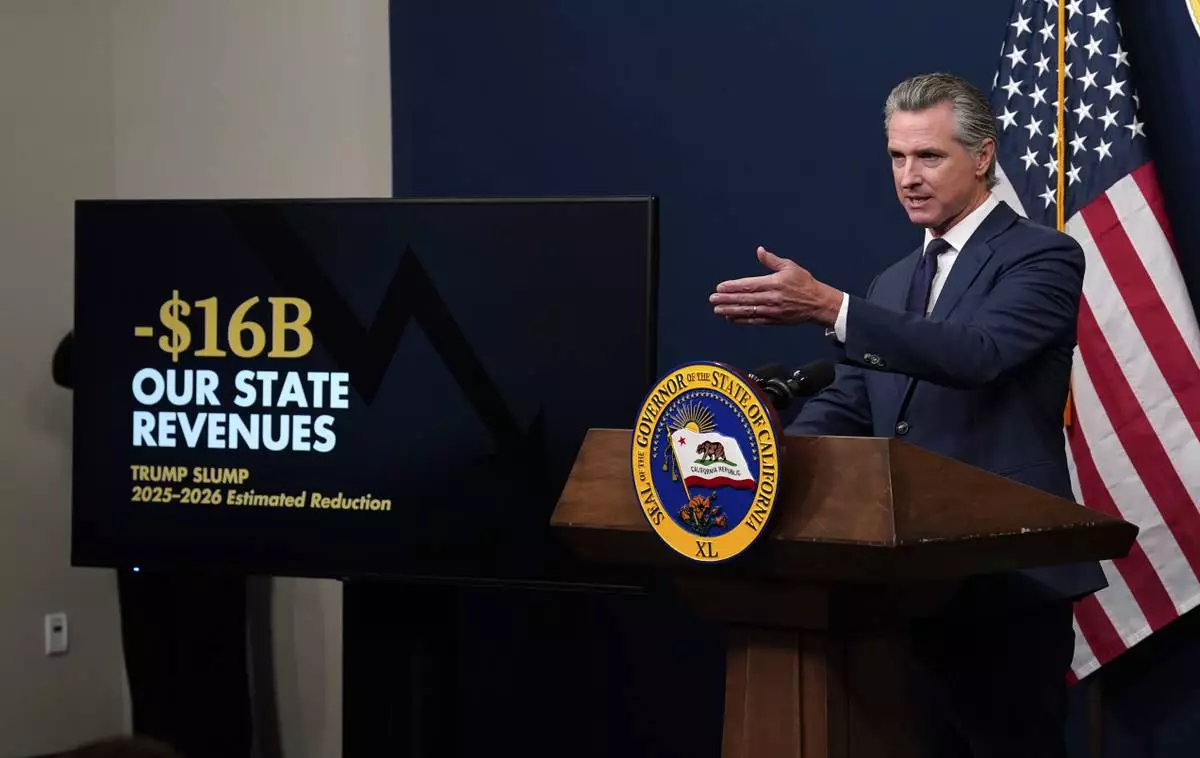
Calif. Gov. Gavin Newsom presents his revised 2024-2025 state budget during a news conference in Sacramento, Calif., Wednesday, May 14, 2025. (Photo/Rich Pedroncelli)
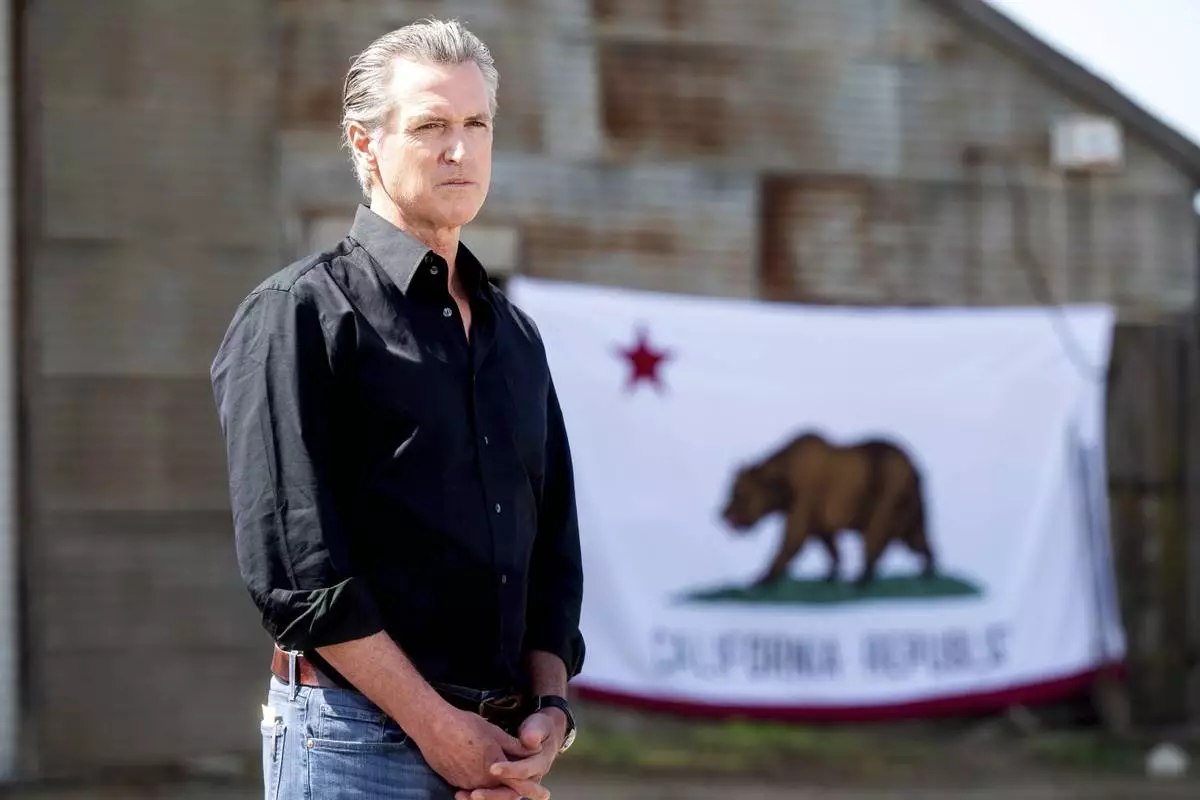
FILE - California Gov. Gavin Newsom stands in front of a state flag during a press conference about President Donald Trump's tariffs on Wednesday, April 16, 2025, at an almond farm in Ceres, Calif. (AP Photo/Noah Berger,FIle)




